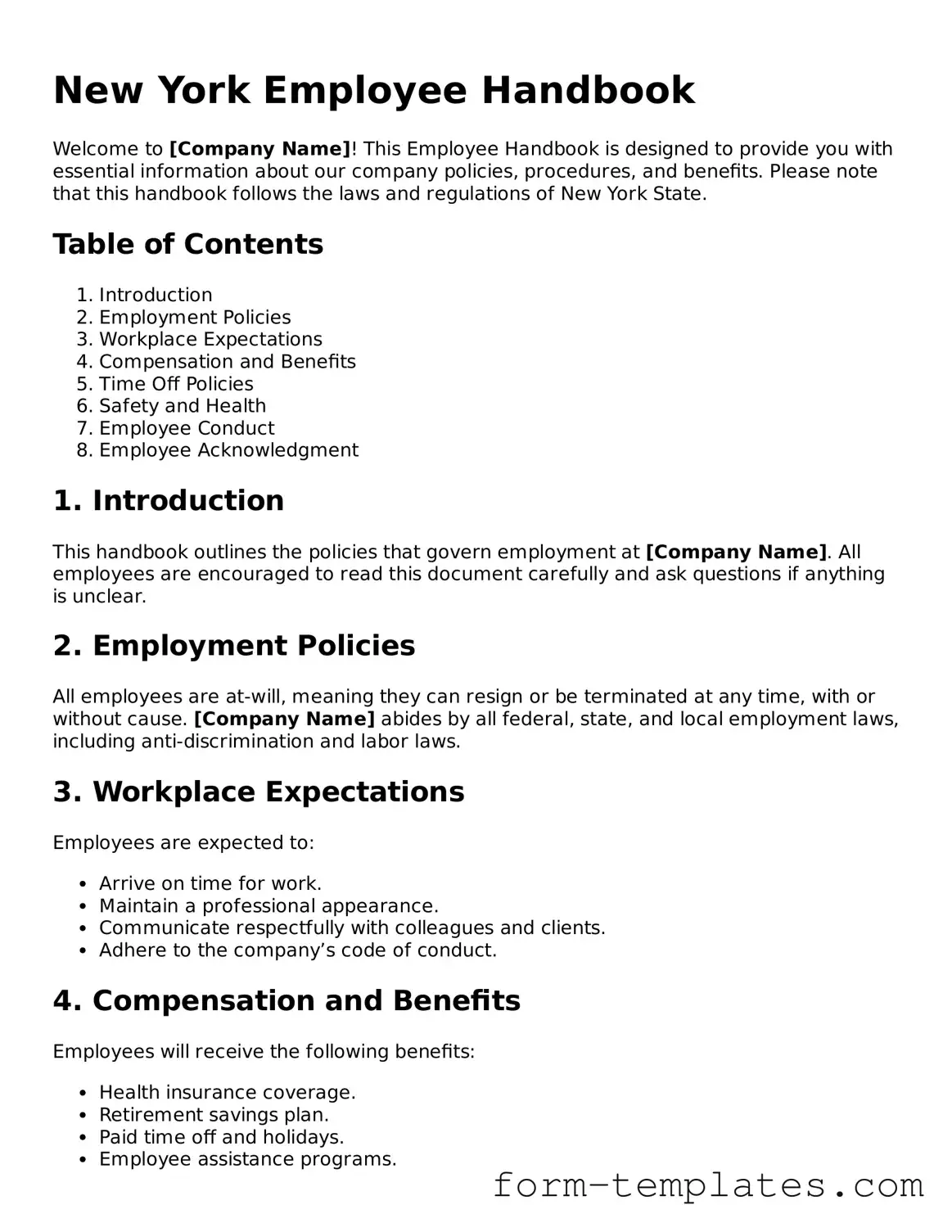New York Employee Handbook
Welcome to [Company Name]! This Employee Handbook is designed to provide you with essential information about our company policies, procedures, and benefits. Please note that this handbook follows the laws and regulations of New York State.
Table of Contents
- Introduction
- Employment Policies
- Workplace Expectations
- Compensation and Benefits
- Time Off Policies
- Safety and Health
- Employee Conduct
- Employee Acknowledgment
1. Introduction
This handbook outlines the policies that govern employment at [Company Name]. All employees are encouraged to read this document carefully and ask questions if anything is unclear.
2. Employment Policies
All employees are at-will, meaning they can resign or be terminated at any time, with or without cause. [Company Name] abides by all federal, state, and local employment laws, including anti-discrimination and labor laws.
3. Workplace Expectations
Employees are expected to:
- Arrive on time for work.
- Maintain a professional appearance.
- Communicate respectfully with colleagues and clients.
- Adhere to the company’s code of conduct.
4. Compensation and Benefits
Employees will receive the following benefits:
- Health insurance coverage.
- Retirement savings plan.
- Paid time off and holidays.
- Employee assistance programs.
5. Time Off Policies
[Company Name] provides paid time off for:
- Holidays.
- Sick leave.
- Vacation.
- Family leave, in accordance with New York State law.
6. Safety and Health
Employee safety is a top priority. All employees must follow safety protocols to ensure a safe working environment. Report any workplace hazards or incidents immediately to your supervisor.
7. Employee Conduct
Unacceptable behavior includes, but is not limited to:
- Harassment or discrimination.
- Theft or vandalism.
- Substance abuse.
- Any form of violence or threats.
8. Employee Acknowledgment
All employees are required to acknowledge receipt of this handbook and agree to comply with its policies. Please sign below:
Employee Name: ______________________
Date: _______________________________
By signing, you acknowledge that you have read and understood the policies outlined in this Employee Handbook.
